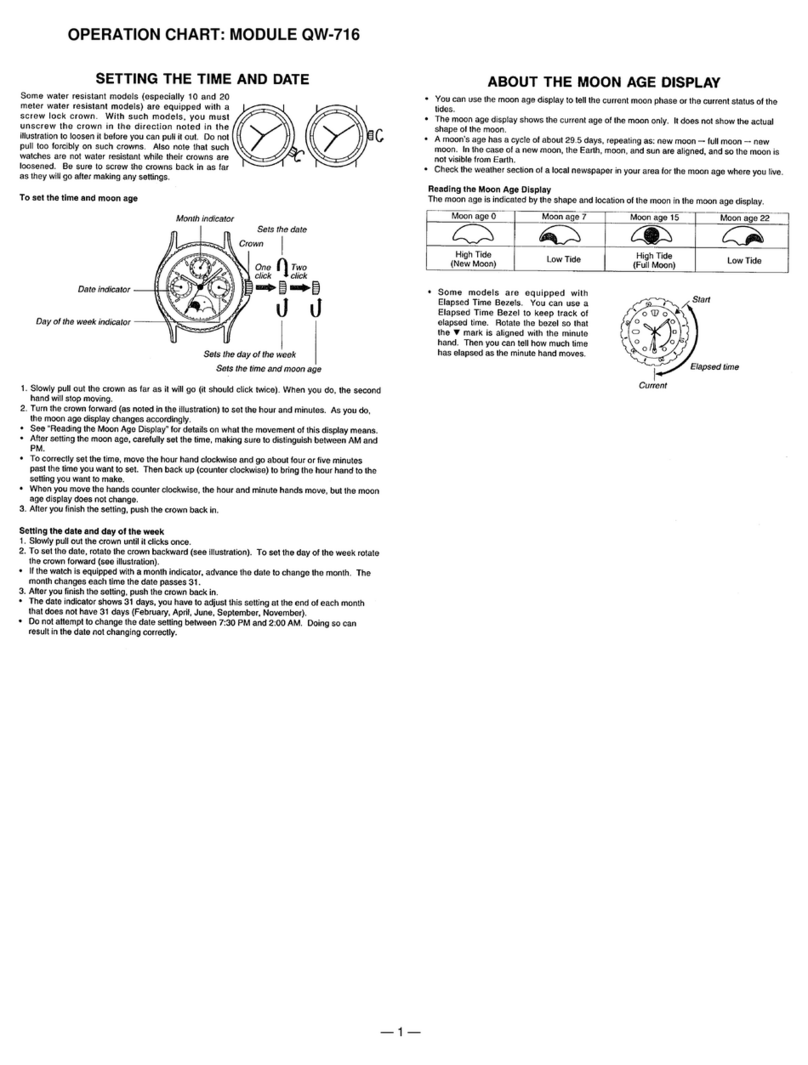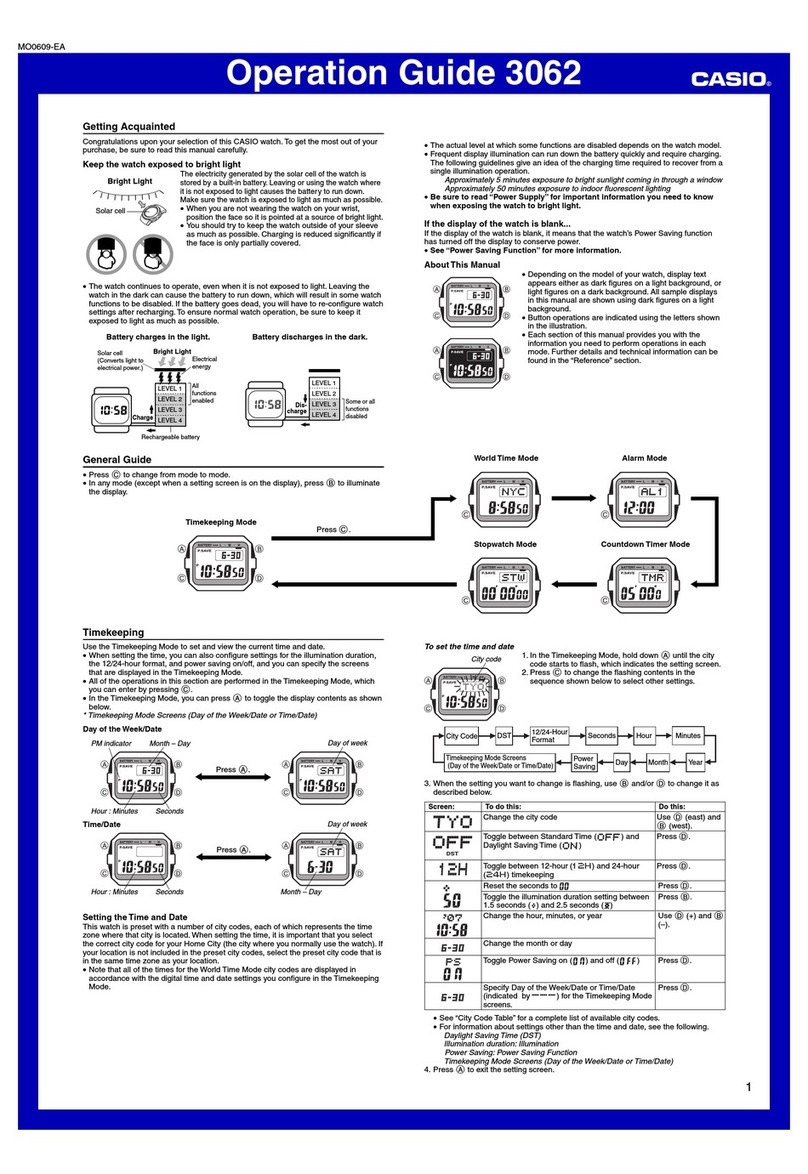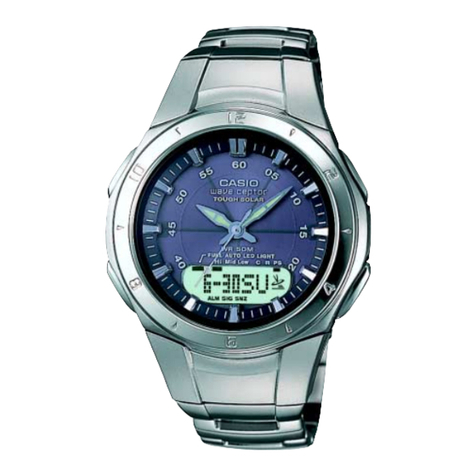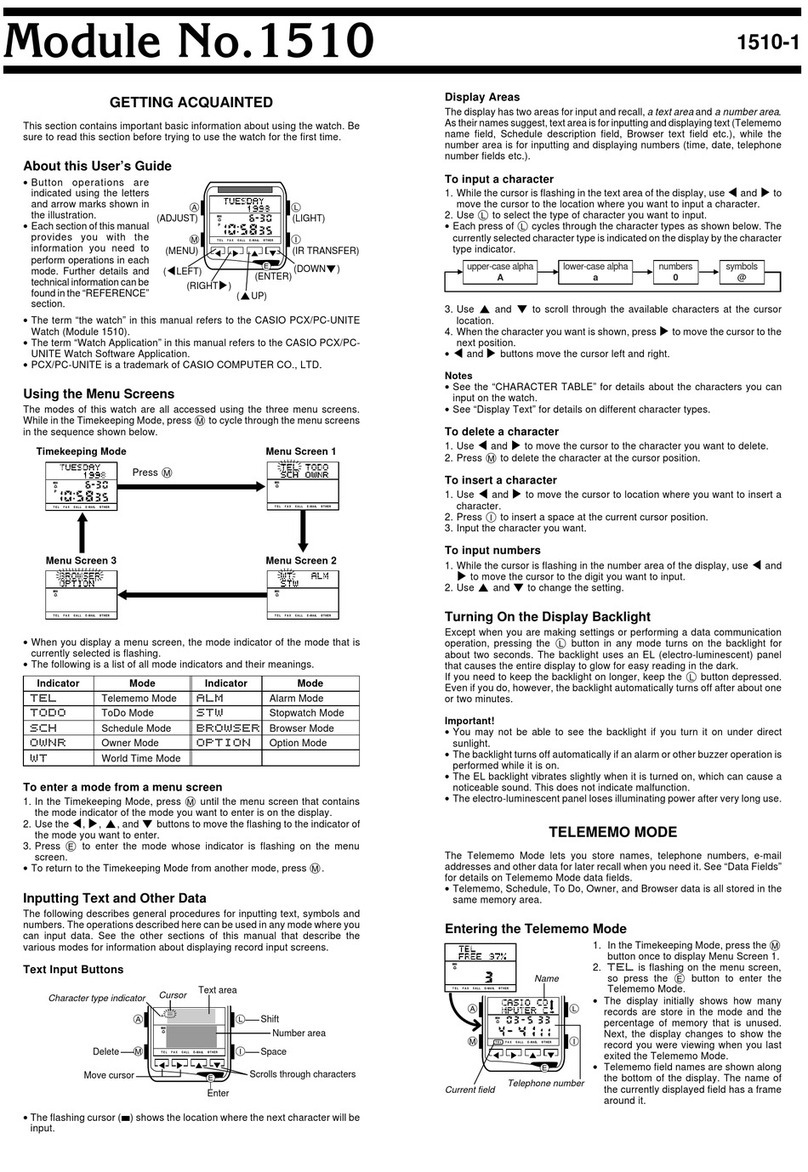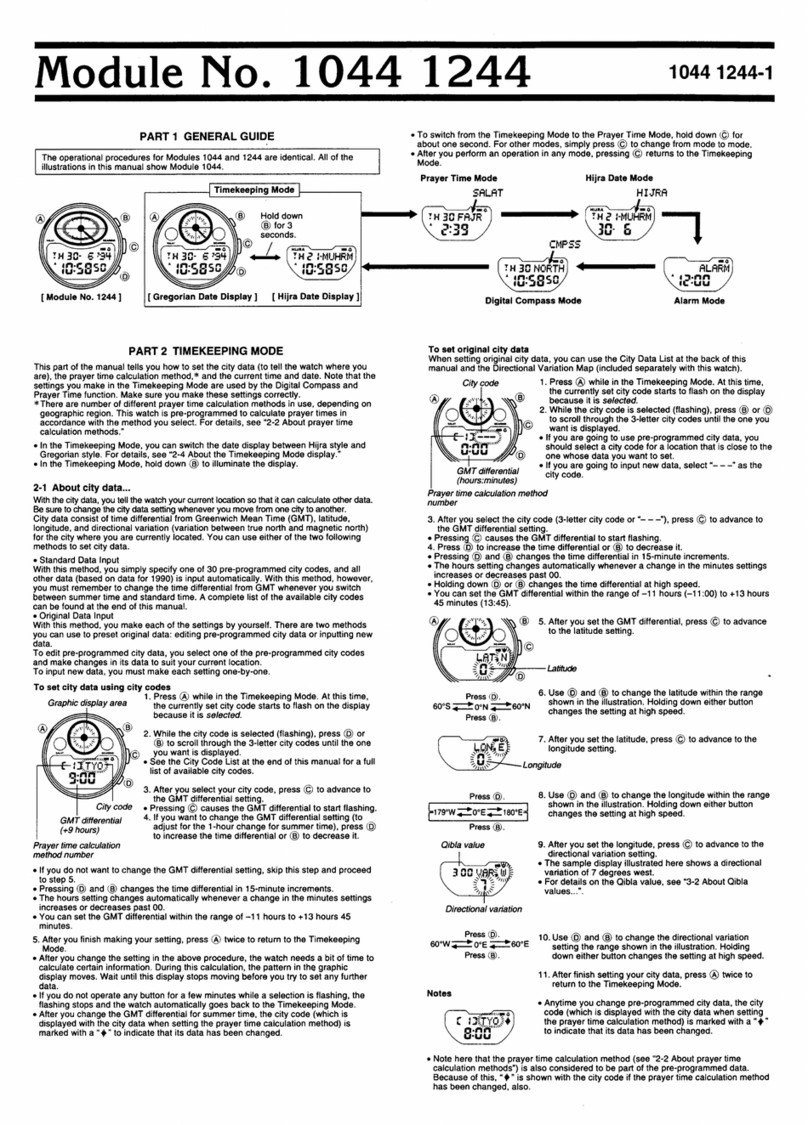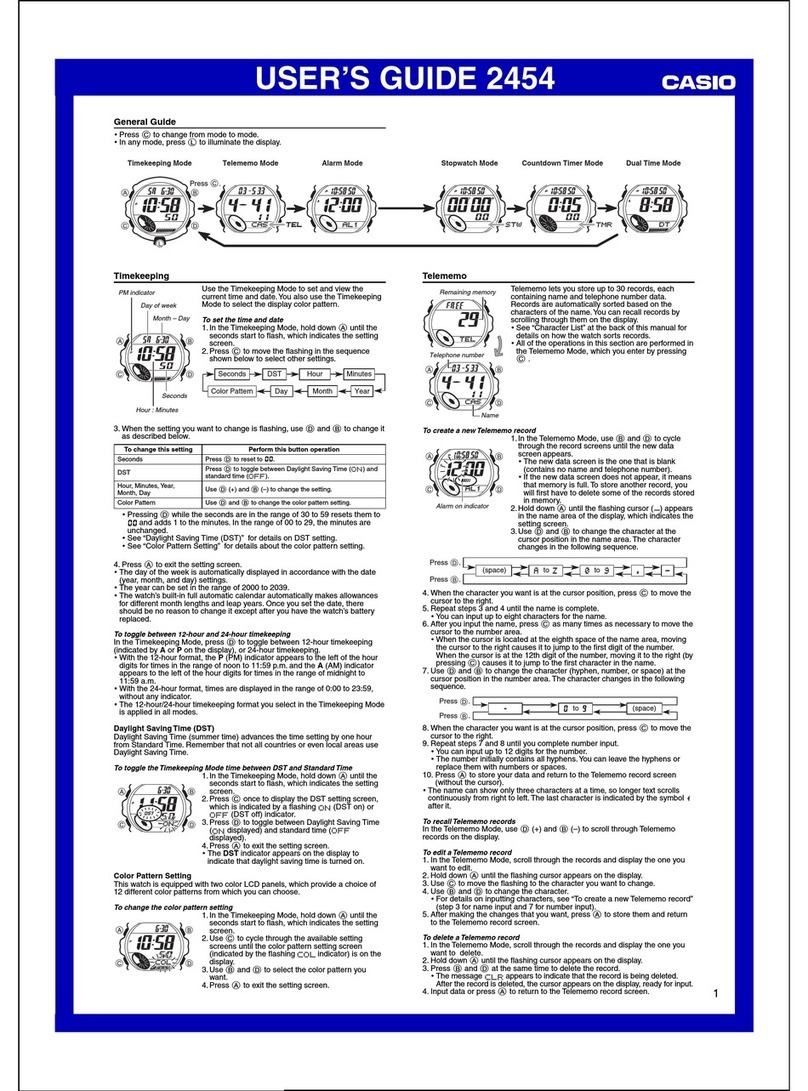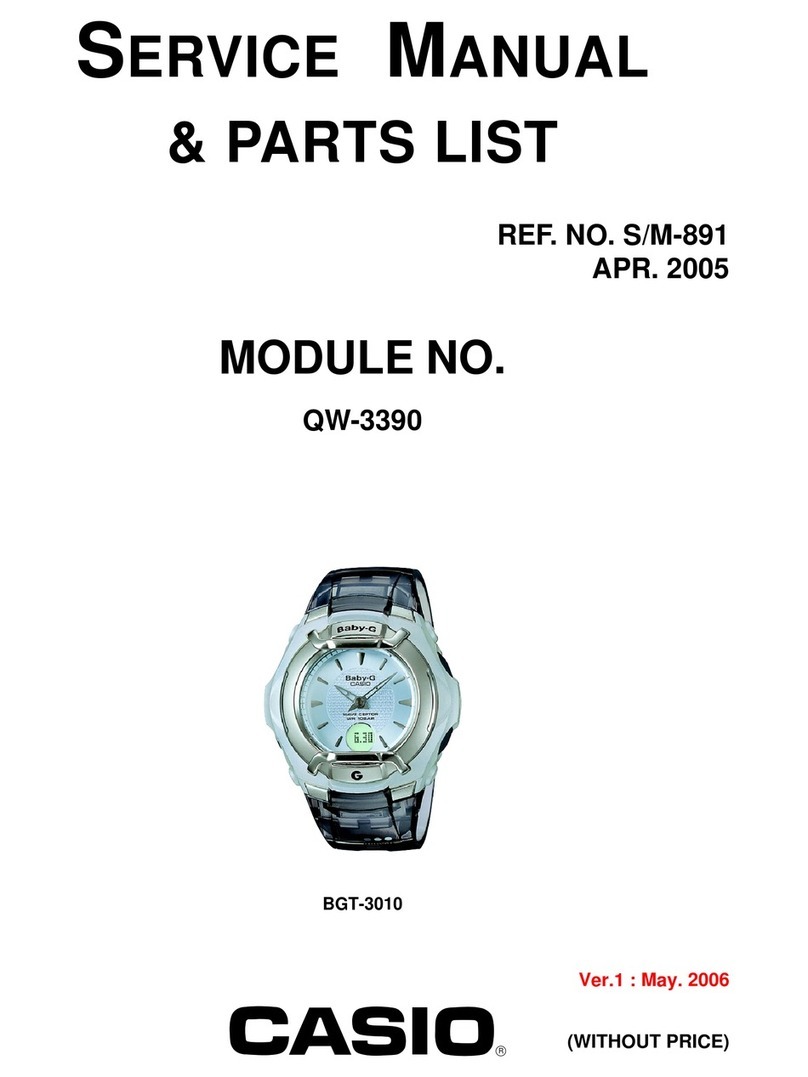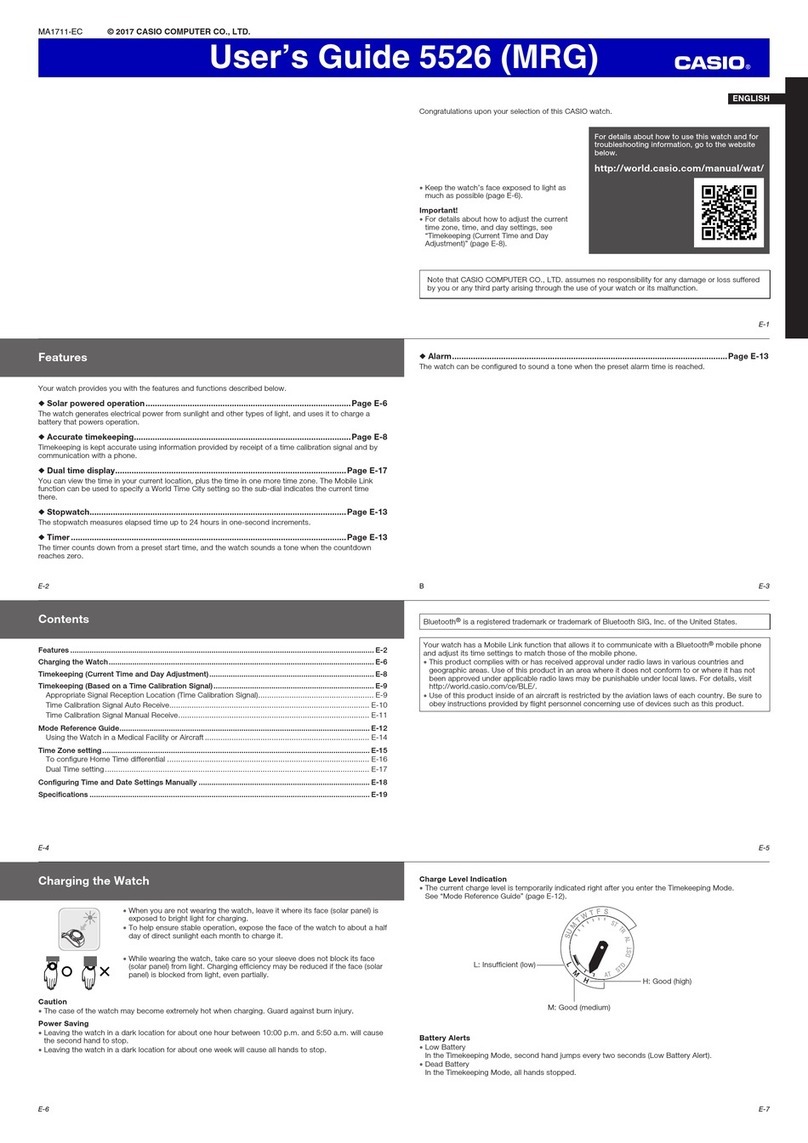Casio 5061 User manual
Other Casio Watch manuals
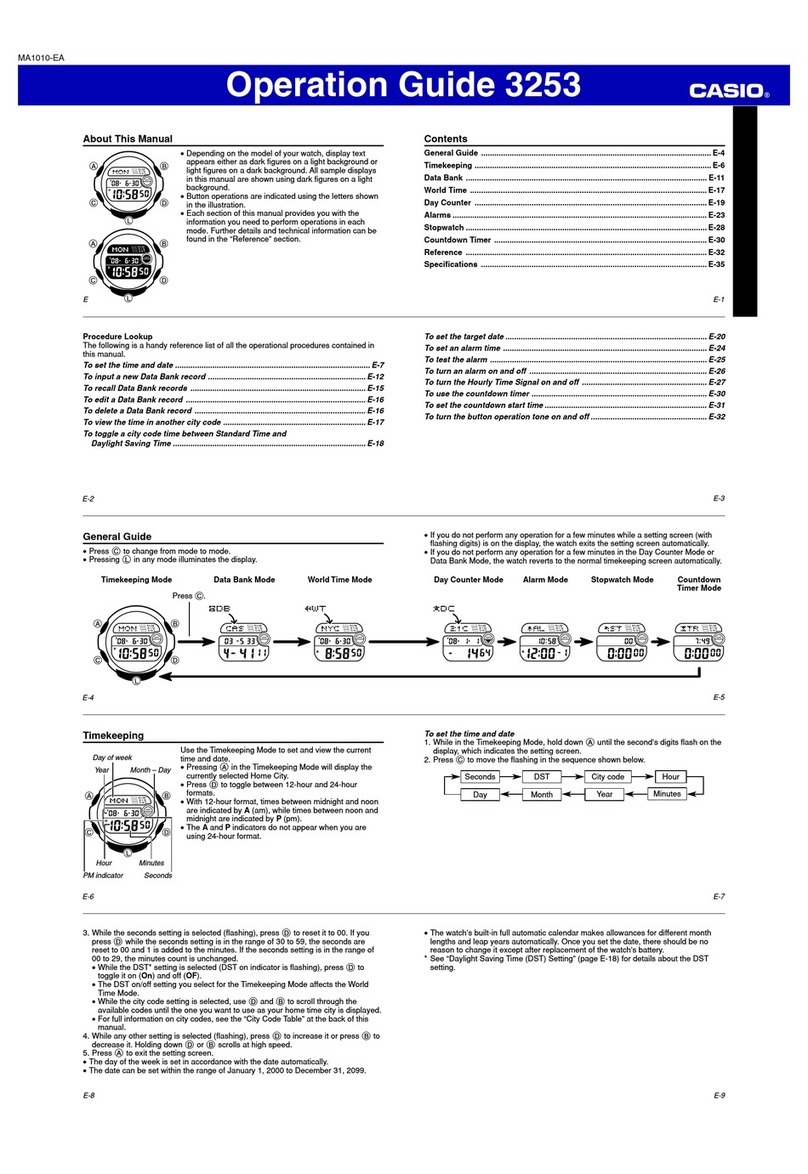
Casio
Casio 3253 User manual
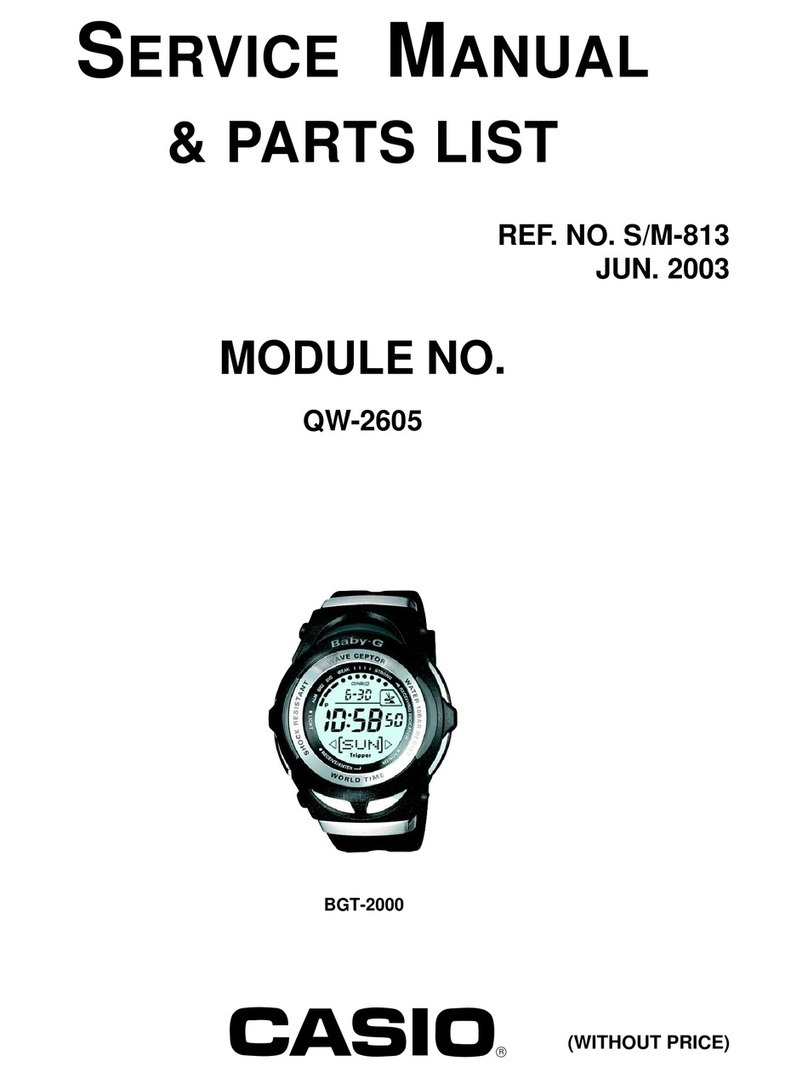
Casio
Casio QW-2605 User manual
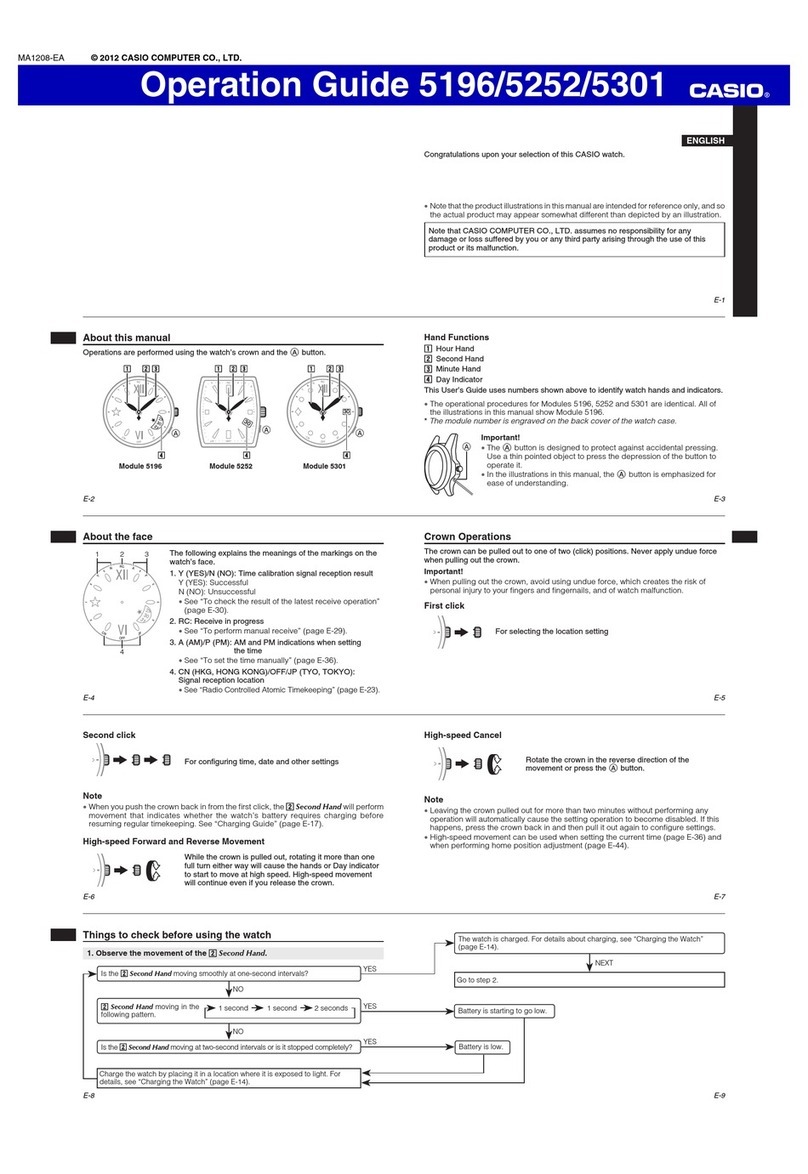
Casio
Casio 5196 User manual
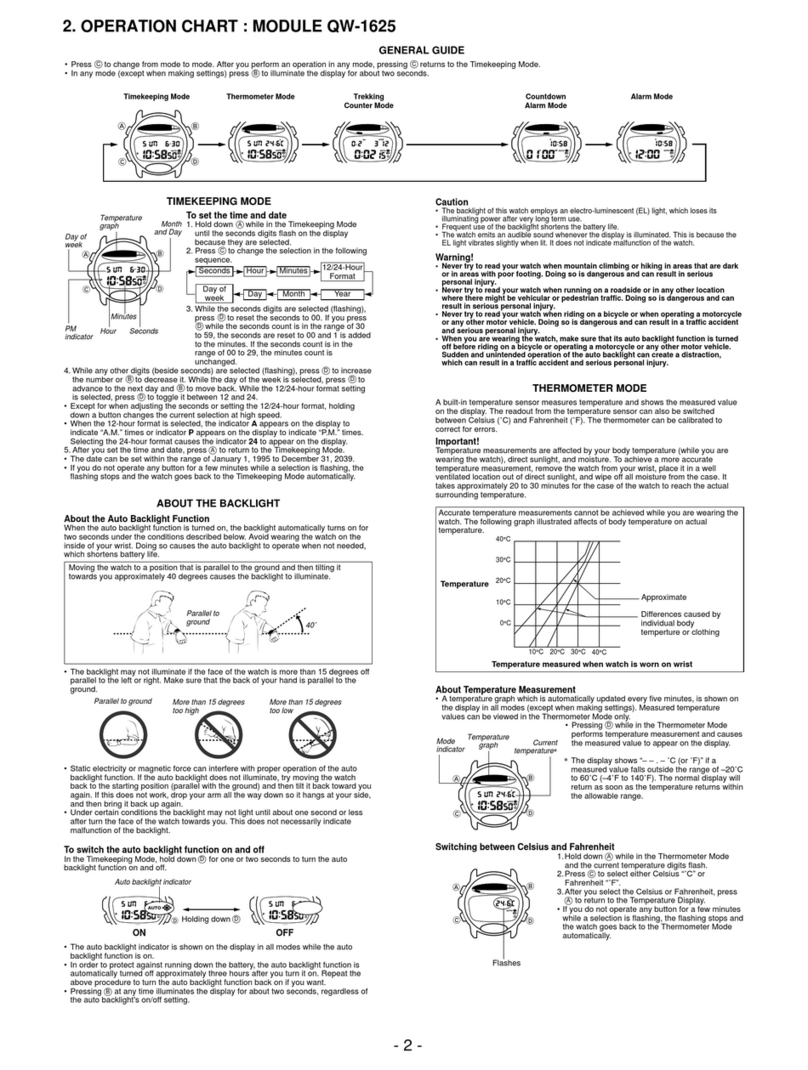
Casio
Casio QW-1625 User manual
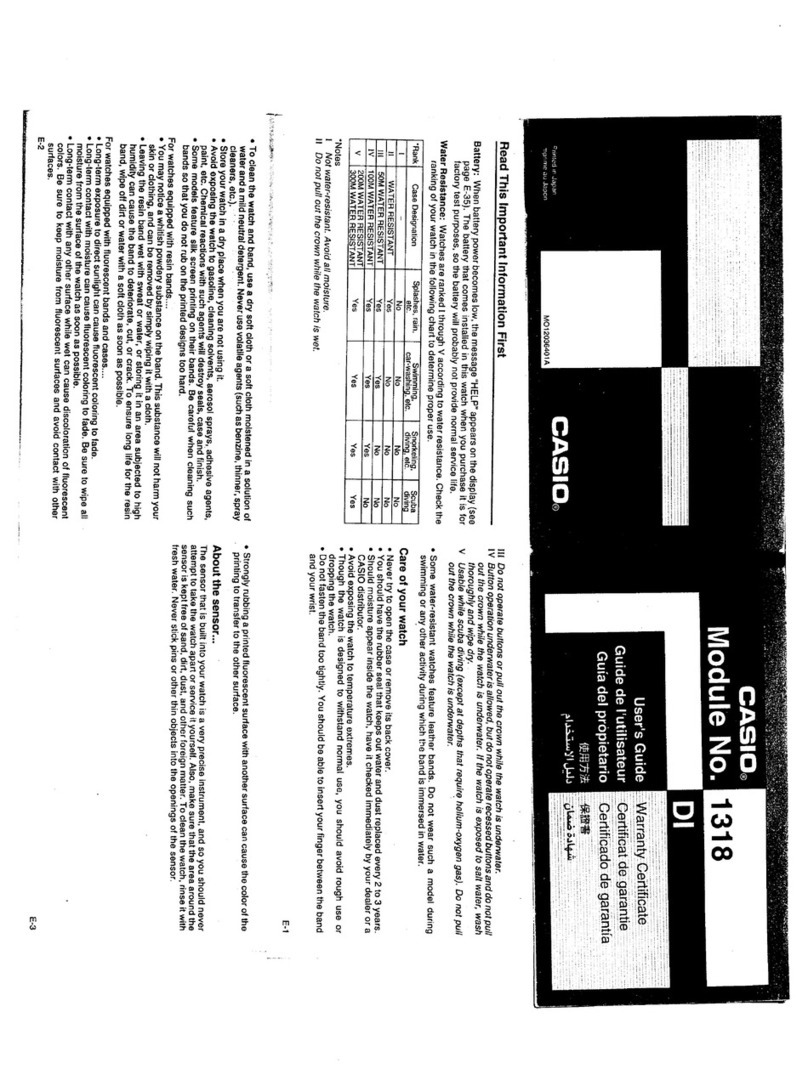
Casio
Casio QW-1318 User manual

Casio
Casio QW-3468 User manual
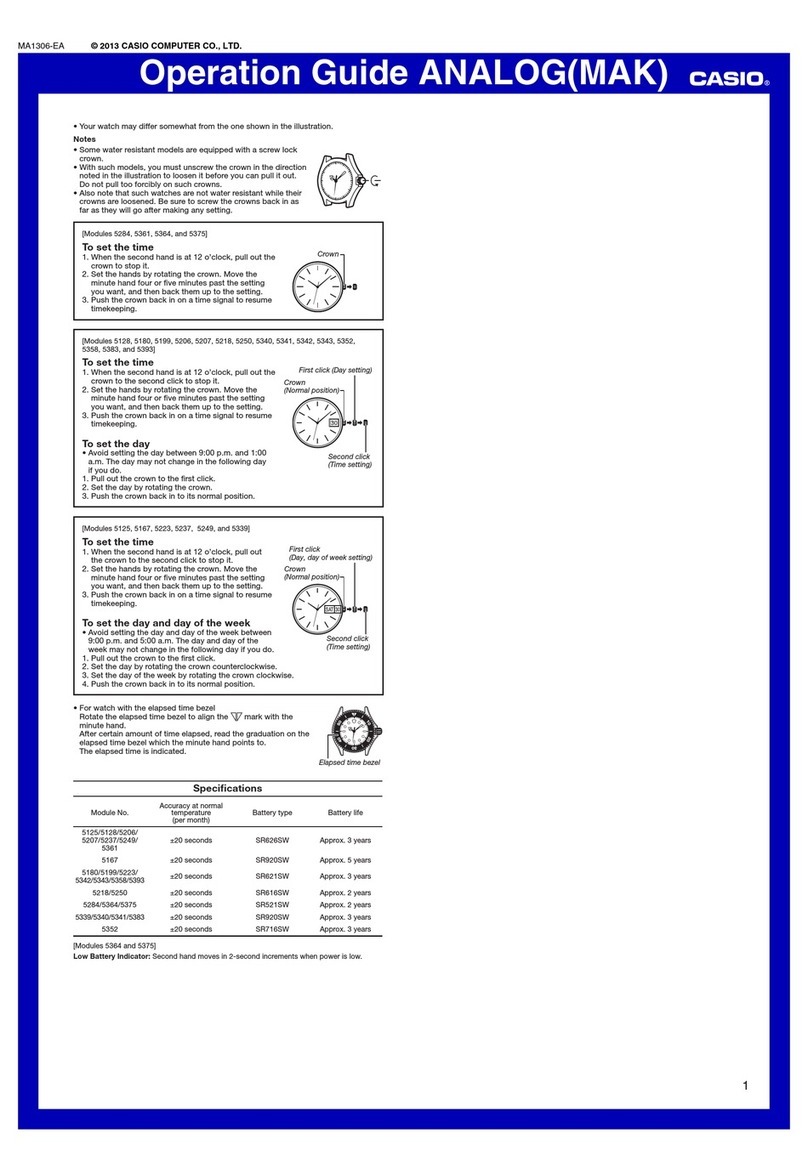
Casio
Casio 5125 User manual
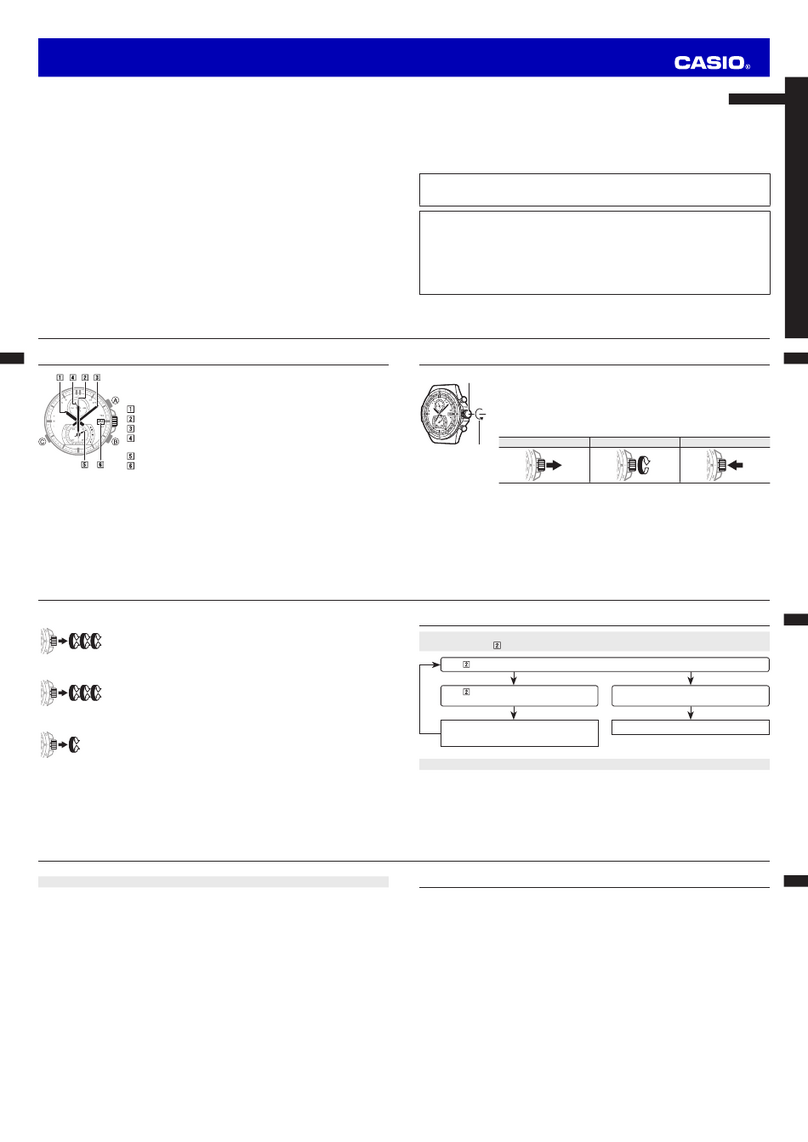
Casio
Casio Edifice EQW-A1200B-1A User manual
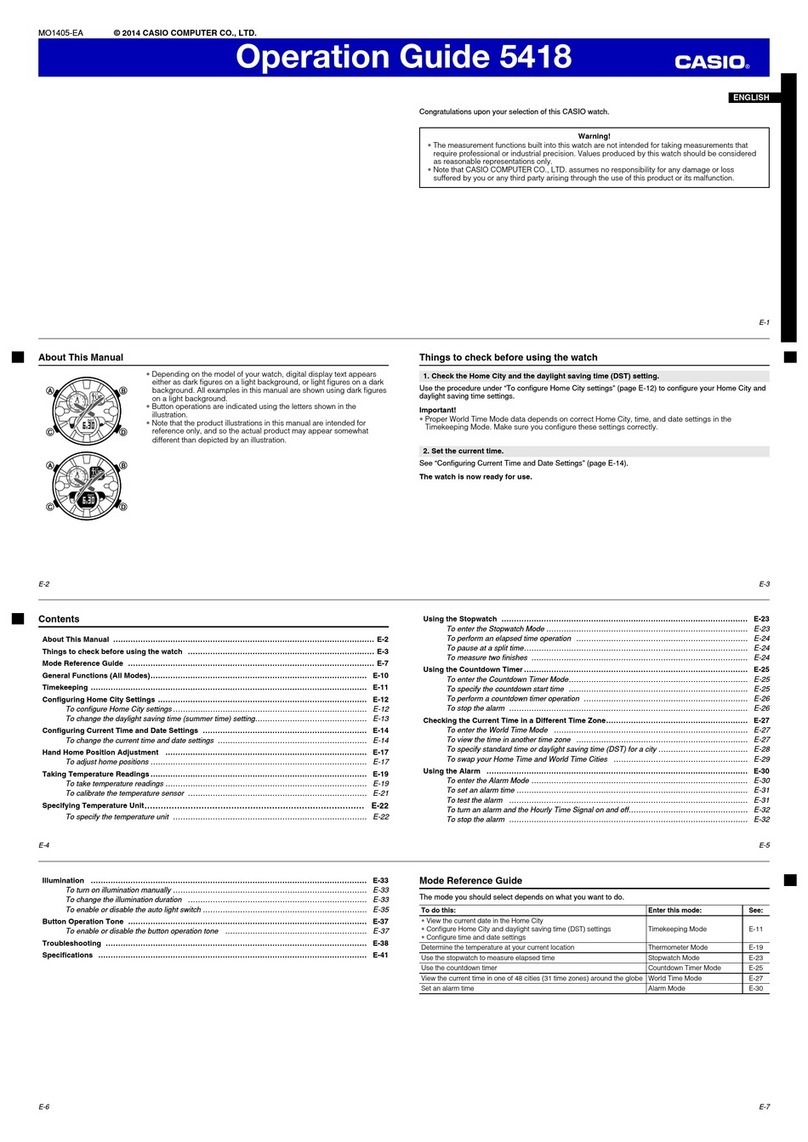
Casio
Casio 5418 User manual

Casio
Casio G-Shock GW1400DA-1AV User manual
Popular Watch manuals by other brands

Piaget
Piaget 560P Instructions for use

Armitron
Armitron pro sport MD0346 instruction manual

West Marine
West Marine BlackTip 13411293 Instruction Booklet and Care Guide

Jaeger-leCoultre
Jaeger-leCoultre HYBRIS MECHANICA CALIBRE 184 manual

FOREVER
FOREVER iGO PRO JW-200 user manual

Relic
Relic OS10 quick start guide
